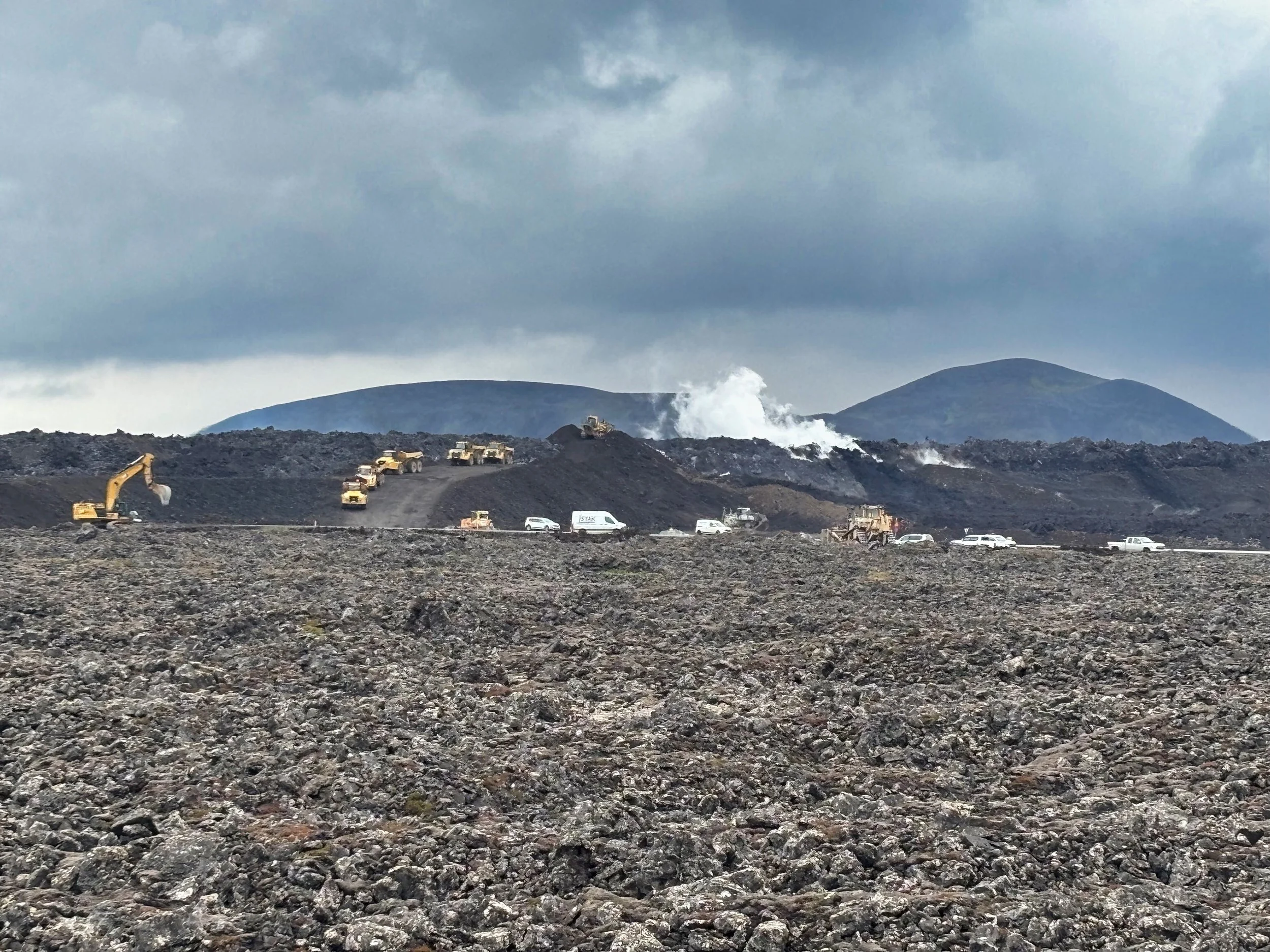THE YOUNG policeman looks bored. “Do you have a booking,” he says. “Yes,” I answer, “we’re staying at The Northern Light Inn.” He doesn’t quite manage a sigh. “Let me see the booking,” he says.
I show him the papers, and he waves us through. Until November last year, Grindavik had been a thriving town of 3,800 people - a big town for Iceland*. Today, the population is zero, and the tidy houses with their neat gardens have been abandoned along with much of their contents. It’s a looter’s paradise, which I guess is why the policeman is there.
The road snakes through the ancient lava fields of the Reykjanes peninsula until there it is on the right hand side of the car: Grindavik, with its empty homes, schools, cafes and churches - as neat as an architect’s model and as empty as a used-up film set, its community scattered.
A few kilometres further on, and not far from Iceland’s famous Blue Lagoon, the reason for the evacuation becomes more apparent. A newly-made, clinker-built road carries us unbelievably across a still smoking lava field. Windows are lowered for photographs of the hot moonscape and almost as quickly raised again - the smoke is sharp and acidic, quite unlike the hot-eggs stench of the hot pools and geysers tourists come to see. It smells dangerous.
We drive on past the Blue Lagoon, which is still open, and on to The Northern Light Inn. In the lobby, there is a large and spectacular photograph of a recent eruption on the fault line at the top of the hill above the hotel. Molten lava is shooting up hundreds of feet into the sky in a dozen or more bursts. If it had been my hotel, I would have run away.
Outside, the eruptions have stopped for now and a fleet of earth-moving vehicles is working on a giant berm - a barricade built of, what-else, lava rock. At the point furthest from view, workmen are spraying gallons of water onto a target we can’t see.
Still, Icelanders are a pragmatic people, and the hotel is surprisingly busy, the staff charming and occasionally very funny and the food excellent. There seem to be children everywhere.
The Icelandic government ordered the evacuation of Grindavik after an earthquake swarm in November last year. Residents have been allowed to return to collect belongings, but not for long. Three houses have been damaged by lava, others by subsidence. The last time the Reykjanes peninsula was an active volcanic site was 800 years ago and nobody is quite sure what will happen next.
Just before we left for our holiday on the Snaefellsness peninsula, the Reykjavik Grapevine magazine talked to Magnús Tumi Guðmundsson - professor of geophysics at the University of Iceland. He said that the current eruption is showing no signs of coming to an end and, even when it does, there may be more eruptions down the line. Or they could stop quite suddenly. Nobody knows.
Meanwhile, Iceland’s government has set up a fund to buy residential properties from Grindavik’s homeowners. Every person who sells has the right to buy back that lasts three years. So far, 600 homeowners have agreed to sell, with more expected to follow.
On the way to Keflavik airport at 4.30 the following morning, we pass the checkpoint again. An improbably young man in a bobble hat waves us on, and we leave Grindavik and Iceland behind us - but not, for me, the sadness that all of those neat rows of abandoned homes and businesses stirred. I’ll get over it; whether Grindavik’s residents ever will is anybody’s guess.
* My friend Clive Stacey, MD of the Iceland travel specialist Discover the World, points out that 3,800 is about one per cent of Iceland’s total population.
Photograph: Earth moving vehicles working on the lava barricade near Grindavik. ©Nigel Pacey 2024
